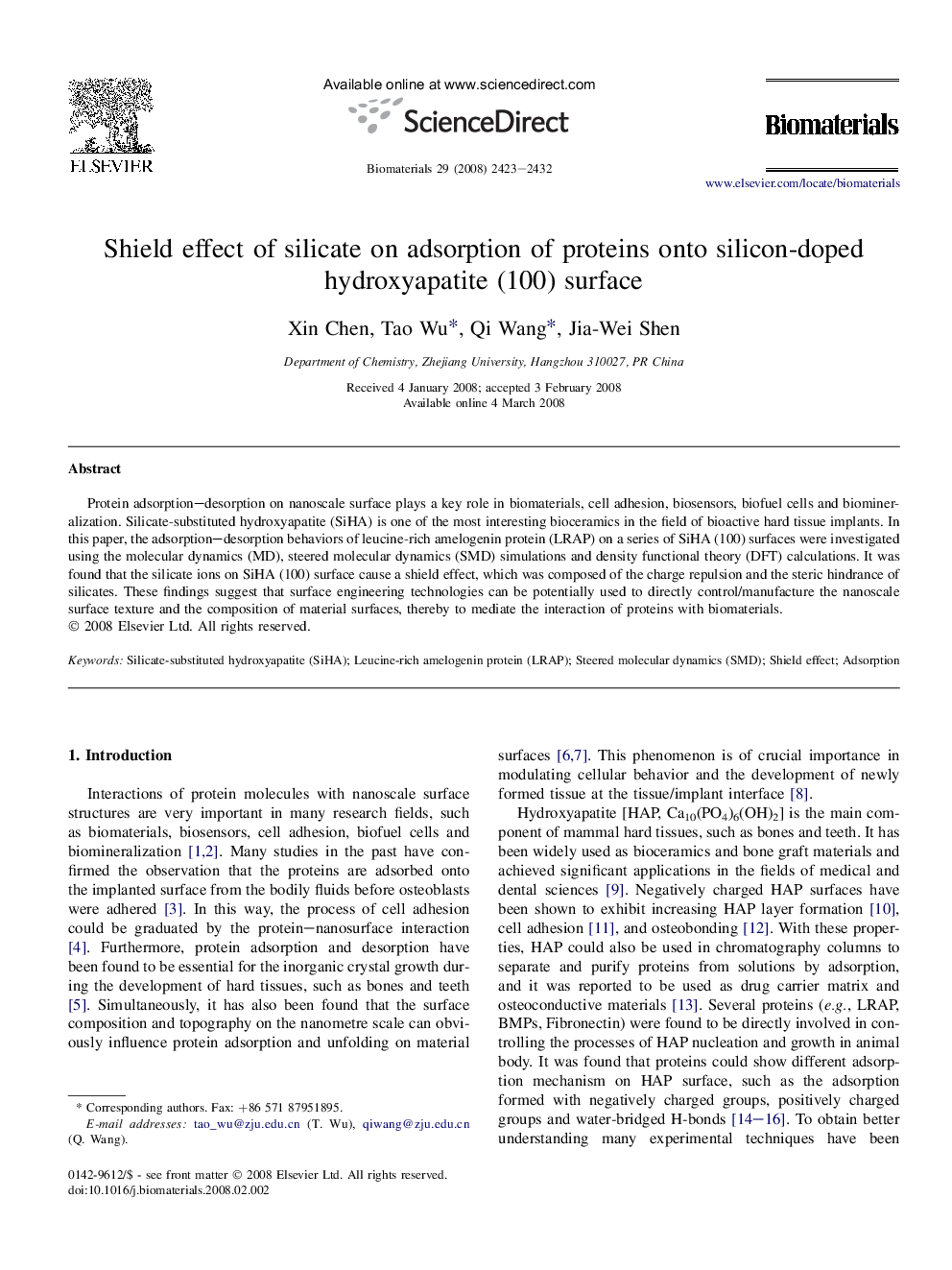| کد مقاله | کد نشریه | سال انتشار | مقاله انگلیسی | نسخه تمام متن |
|---|---|---|---|---|
| 10131 | 666 | 2008 | 10 صفحه PDF | دانلود رایگان |

Protein adsorption–desorption on nanoscale surface plays a key role in biomaterials, cell adhesion, biosensors, biofuel cells and biomineralization. Silicate-substituted hydroxyapatite (SiHA) is one of the most interesting bioceramics in the field of bioactive hard tissue implants. In this paper, the adsorption–desorption behaviors of leucine-rich amelogenin protein (LRAP) on a series of SiHA (100) surfaces were investigated using the molecular dynamics (MD), steered molecular dynamics (SMD) simulations and density functional theory (DFT) calculations. It was found that the silicate ions on SiHA (100) surface cause a shield effect, which was composed of the charge repulsion and the steric hindrance of silicates. These findings suggest that surface engineering technologies can be potentially used to directly control/manufacture the nanoscale surface texture and the composition of material surfaces, thereby to mediate the interaction of proteins with biomaterials.
Journal: Biomaterials - Volume 29, Issue 15, May 2008, Pages 2423–2432